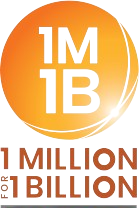The demand for permanent residency (PR) in Canada has surged over the years, reinforcing the country’s reputation as a top destination for skilled workers, international students, and families. In 2022, Canada set a new record by admitting over 437,000 permanent residents, surpassing the previous high of 405,000 in 2021, according to Immigration, Refugees, and Citizenship Canada (IRCC). This sharp increase is driven by Canada’s aging population and critical labor shortages across multiple sectors, prompting policymakers to set even more ambitious immigration targets. By 2025, Canada aims to welcome half a million newcomers annually—a bold initiative designed to address demographic challenges and bolster economic growth.
Among the various pathways to obtaining PR, the Express Entry System is one of the most popular. This article will delve into what it entails, how it works, and what aspiring immigrants need to know.
What is the Express Entry System?
The Express Entry System is a points-based immigration management system that processes applications for three key programs:
- Canadian Experience Class (CEC) – For skilled workers with eligible Canadian work experience.
- Federal Skilled Worker Program (FSWP) – For skilled workers with foreign or Canadian experience who meet the eligibility criteria.
- Federal Skilled Trades Program (FSTP) – For workers qualified in a skilled trade.
Candidates must first create an Express Entry profile, which is then assessed under the Comprehensive Ranking System (CRS). The CRS assigns a score out of 1,200 points based on factors such as age, education, language proficiency, work experience, and job offers. Candidates with the highest CRS scores receive Invitations to Apply (ITA) for permanent residency during regular Express Entry draws conducted by IRCC.
Steps to Apply for Express Entry
The application process for Express Entry consists of three key steps:
- Prepare Required Documents: Candidates must gather essential documents, including:
- Language test results (English/French proficiency)
- Educational Credential Assessment (ECA) report
- Passport or travel document
Eligibility Criteria
Before comparing the three programs under Express Entry, it is essential to understand three key terms:
- Canadian Language Benchmark (CLB): A standard used to assess English and French language proficiency.
- National Occupational Classification (NOC): A list of occupations in the Canadian labor market, categorized into six Training, Education, Experience, and Responsibilities (TEER) levels.
- TEER Categories: A classification system that determines the level of education and training required for specific occupations.
Work Experience Requirements
Job Offer and Education Requirements
Understanding the Express Entry Tie-Breaker Rule
During Express Entry draws, the tie-breaker rule is applied when multiple candidates have the same CRS score. In such cases, preference is given to candidates who submitted their profiles earlier. The cut-off date and time for tie-breaking are announced alongside the draw results. This ensures a fair and transparent selection process.
Factors Affecting CRS Score
The CRS score ranks candidates based on several factors, including:
- Age
- Education Level
- Proficiency in English or French
- Work Experience (both Canadian and foreign)
- Spouse or common-law partner factors
- Connections to Canada (such as having a sibling in Canada)
Difference Between Express Entry Eligibility Points and CRS Score
To apply under the Federal Skilled Worker Program (FSWP), candidates must score at least 67 points on the eligibility criteria grid. However, once an FSW candidate (or any other Express Entry candidate) enters the pool, they are assigned a CRS score. Approximately every two weeks, IRCC conducts an Express Entry draw, setting a minimum CRS cut-off score. Candidates with scores above this cut-off receive an Invitation to Apply (ITA) for PR, as per the Canadian Immigration Law Firm.




